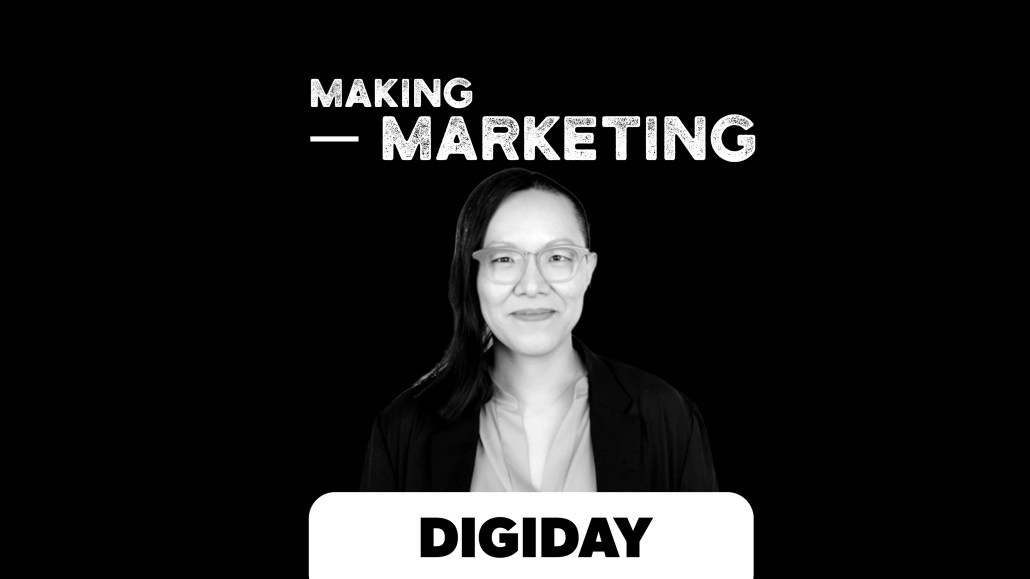Save 50% on a 3-month Digiday+ membership. Ends Dec 5.
Visible CMO Minjae Ormes: Phone service can be a ‘lifestyle brand’

Subscribe: iTunes | Google Play | Stitcher | RSS | Anchor
A few months ago, Verizon launched Visible, a new brand that sits within the multi-billion dollar company. Launched invite-only, Visible is a digital-only phone carrier with no stores and e-commerce only service. And the telco brand is taking cues from direct-to-consumer brands.
“When I think of Visible as a product, I think about it as a lifestyle brand,” said Minjae Ormes, CMO at Visible. “The inspiration is in the Caspers of the world or beauty brands like Glossier. A lot of utilities services disappear in the background when it works. Phone service should work, it’s expected to work and you don’t get extra points for working well. When it doesn’t work, you end up in the category where sentiments get shared on social media. As a marketer, my challenge is to have a different relationship that is not either-or but somewhere in between where people see the value of the experience we provide.”
Ormes, the CMO of Visible, discusses Visible’s strategy, the cues the company’s taken from Glossier and its own direct to consumer playbook. Edited highlights below.
Customers want a different relationship with their phone service.
“Verizon has a powerful brand but [we asked] are there folks who want to have a different type of relationship with [Verizon] and doing business with their carriers? [Visible] has no storefronts, everything is done digitally. If you sign up for a service, you can go to the app or the website, sign up and the next day, we send you the SIM. We’re catering to folks who may not have the time to or may not want to go into physical stores to do their business and also be where they need to be on the go.”
Telco needs a DTC pioneer.
“People are used to having the retail and purchase experience without ever setting foot in the stores and things being brought to them like ordering food or a date on your phone. That behavior hasn’t existed in telco. We’re trained to go into stores and purchase a phone and a phone service. If people want to do their business in ways other industries have caught up to, can we serve our customers the same way? It’s about the behavioral disposition than an age group. It might feel like it’s for young people but they tend to be early adopters. If it’s good for them, then it should be good for anyone who is wants to live their lives on the go.”
Ad position: web_incontent_pos1
Showing up on social media and other channels to be a relevant utility brand.
“Social channels like Facebook and Instagram have been valuable to us. We get the real time engagement and feedback. It’s also a human-level relationship. You can’t put a message out there, expect people to see it, go away for a few weeks and then come back and say ‘hey how are you doing?’ We have to be a part of people’s day-to-day lives. People are getting a lot of messages from different brands. You have to be different and not different for difference’s sake. We are thinking through the channels where people are spending their time like streaming platforms or where the cord-cutters are showing up. This is an interesting group for us because they’re already thinking about value and how to hack their budget and make it work for your lifestyle.”
More in Marketing

Ulta, Best Buy and Adidas dominate AI holiday shopping mentions
The brands that are seeing the biggest boost from this shift in consumer behavior are some of the biggest retailers.

U.K. retailer Boots leads brand efforts to invest in ad creative’s data layer
For media dollars to make an impact, brands need ad creative that actually hits. More CMOs are investing in pre- and post-flight measurement.

‘AI is permeating everything we do’: How Guitar Center developed 2 AI tools this year
This summer, the company launched a chatbot called Rig Advisor to help customers find the right instruments and products.
Ad position: web_bfu




